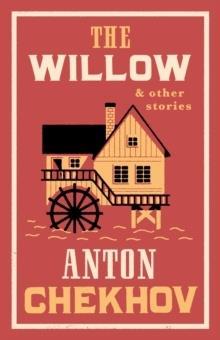
THE WILLOW AND OTHER STORIES
THE WILLOW AND OTHER STORIES
Εκδόσεις:
Alma Books
Old Arkhip sits every day by the roots of a wizened, hunchbacked willow, fishing and exchanging whispered stories with the ancient tree. One of these takes Arkhip three decades back in time, to a quiet day in early spring when a strange encounter shook him momentarily from the rural bliss in which he lived, catapulting him into a world of crime, corruption, violence and murder. A quintessential example of Chekhov’s artistry, ‘The Willow’ is here accompanied by thirty-two other short stories – some of them never or rarely translated into English – which are representative of the three main phases of the author’s career: the short, light-hearted pieces of the late 1880s, the darker, more pessimistic tales of his maturity and the psychologically nuanced stories he wrote towards the end of his life.Taken together, this collection is further proof of Chekhov’s unparalleled skills as a practitioner of the short-story genre.
Περιγραφή

Λεπτομέρειες

Αποστολή & Πάραδοση

Παραλαβή από κατάστημα
Παραλαβή από κατάστημα
Παραλαμβάνεται την παραγγελία σας από το κατάστημά μας επί της οδού Στ.Τσαλαβούτα 3, 12131, Περιστέρι.
Courier
Courier
Αποστέλεται με την εταιρεία ACS ή Γενική Ταχυδρομική εντός μιας εργάσιμης.
Άμεσα διαθέσιμο
10.79€
10.79€
Βιβλία ίδιας κατηγορίας
Βιβλία ίδιας κατηγορίας


Μάθετε πρώτοι τα νέα μας
και τις προσφορές μας.
Ανώνυμη Εταιρεία Διακίνησης
Εμπορίας και Έκδοσης Βιβλίων
 Στ. Τσαλαβούτα 3, Τ.Κ. 12131, Αθήνα - Ελλάδα
Στ. Τσαλαβούτα 3, Τ.Κ. 12131, Αθήνα - Ελλάδα 211 104 1980
211 104 1980 [email protected]
[email protected]
powered by
 engine
🛠20220629.154231
engine
🛠20220629.154231
 engine
🛠20220629.154231
engine
🛠20220629.154231


